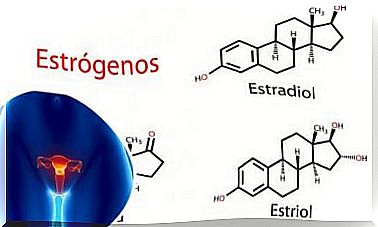Signs Of Lactose Intolerance You Didn’t Know About
Although the symptoms are not serious, it is true that they can interfere with the lives of patients since they can cause some discomfort. Are you curious to know more? In that case, keep an eye out because below you will find out what are the signs of lactose intolerance, an increasingly common disorder.
Lactose intolerance is a disorder that manifests itself due to a deficiency in the enzyme (lactase) responsible for digesting it. This lactase deficiency, produced in the small intestine, generates a malabsorption that causes the milk sugar to pass to the colon, where it ferments and generates gases.
To understand this a little better, experts indicate that “all infants have lactase in their intestines to be able to digest breast milk. Most of them produce less lactase as they grow older. When the amount of lactase is no longer sufficient, people begin to have symptoms of lactose intolerance after consuming dairy products. ‘
Symptoms of lactose intolerance

The National Library of Medicine of the United States explains that signs of lactose intolerance usually appear between 30 minutes and 2 hours after consuming any food that contains lactose.
The severity of the symptoms will depend on each person, the amount ingested and the degree of insufficiency of the lactase enzyme. In general, the most common signs and symptoms are the following:
- Gases
- Diarrhea.
- Colic.
- Nausea or vomiting
- Abdominal swelling
- Perianal redness
It should be noted that, in the case of children or adolescents, the most common signs of lactose intolerance are nausea and vomiting.
On the other hand, in chronic cases (secondary lactase deficiency), in addition to the aforementioned signs of lactose intolerance, the following may also occur:
- Explosive defecation.
- Abdominal spasms
- Perianal redness
- Noticeable weight loss.
Additionally, patients with secondary lactase deficiency may present with skin problems, extreme fatigue, and pain in the extremities.
How to detect lactose intolerance?
If you think you have this problem, it is essential to see a specialist. The professional will indicate different studies to diagnose the condition. The most used tests are the following:
Glycemic response measurement
- First, blood is drawn to find out the initial blood glucose level.
- The patient is then boosted with 50 grams of lactose every 30 minutes for 2 hours (4 intakes).
- After that, another blood sample is obtained to determine the amount of glucose.
If the rates are the same, it is because lactase is not working properly. However, this test is not very specific, since there are other pathologies that could alter blood glucose, such as diabetes mellitus.
Measurement of hydrogen in breath

It is the most widely used method to detect lactose intolerance. National Institute of Diabetes and Digestive and Kidney Diseases explains that the person should consume a lactose solution and, at 15-minute intervals, blow into airtight bags.
When the sugars in milk are not digested and go to the intestine, the bacteria that consume them produce hydrogen. Therefore, if your breath has a good amount of this compound, it is likely due to a problem with the digestion of dairy.
Small bowel biopsy
The samples required for this study are obtained through esophageal or gastrointestinal endoscopy. These intestinal tissue fragments are subsequently analyzed in the laboratory to verify the presence or absence of lactase in the mucosa.
Acidity of the stools
This test is mostly used in young children as other tests are impractical or risky at a young age. In it, the acidity level of the patient’s feces is analyzed.
Genetic test
The objective of the evaluation carried out is to detect a primary intolerance caused by the MCM6 gene. A sample of blood or saliva from the patient is sufficient to analyze the two polymorphisms related to this condition.
Still don’t know if you are lactose intolerant?
If after reviewing the list of signs of lactose intolerance you suspect that you may have it, it is best to go for a medical checkup as soon as possible. In this way, you will get rid of doubts and discover how you should take care of yourself to avoid discomfort.
Remember to tell the doctor about all the doubts you have so that you do not take them back home. This will help you to better understand what you should and should not do on a day-to-day basis.









